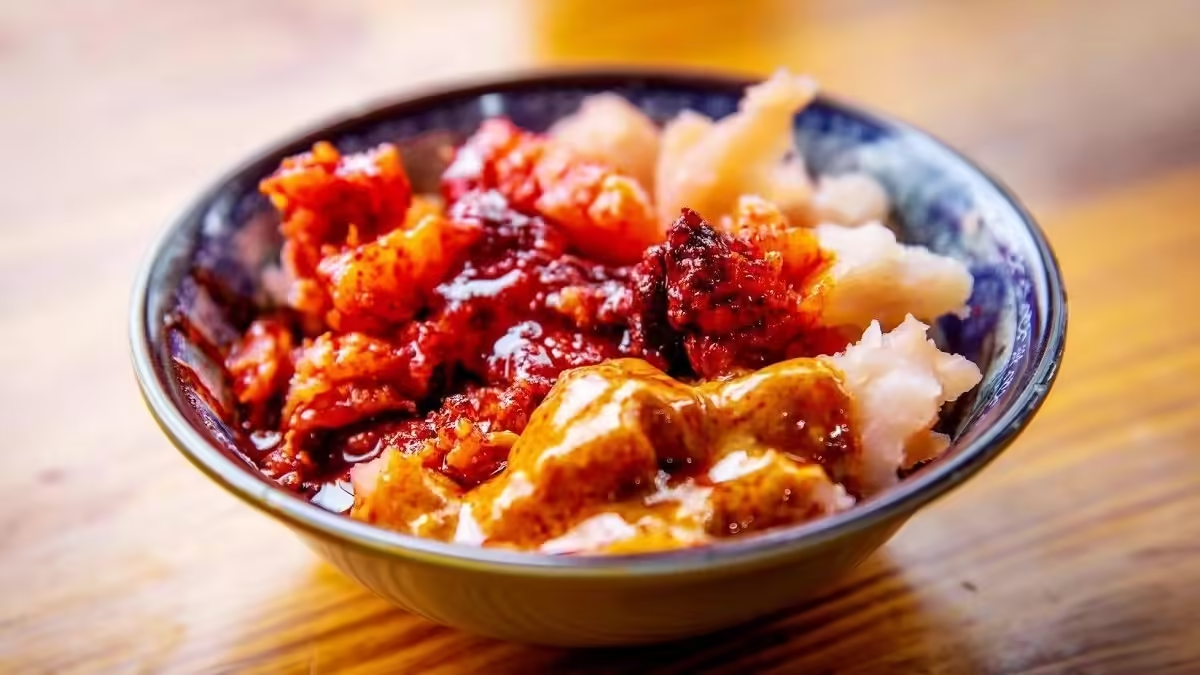Tianshui Guagua (天水呱呱) boasts a history spanning over 2,000 years, originating during the Western Han Dynasty. According to legend, it became a royal dish in the imperial court when Wei Xiao governed Tianshui. The Empress Dowager, Wei Xiao’s mother, had a particular fondness for Guagua, insisting that it be served every three days. After Wei Xiao’s downfall during the Eastern Han Dynasty, he fled to Western Shu and left the royal chefs behind. One such chef, seeking refuge, rented a shop in Tianshui, where he continued to serve this cherished dish. Another tale attributes the creation of Guagua to a father-daughter duo with the surname Liu during the Ming Dynasty, who innovatively built upon the existing recipe for cold buckwheat noodles.
Preparation Process
The main ingredient in Tianshui Guagua is buckwheat starch, although variations may include ice beans, peas, or other flours. However, buckwheat Guagua remains the most popular.
Soaking and Processing: Buckwheat flour is soaked in water to extract the starch, which is referred to as “Qiaozhenzi.”
Cooking the Starch: The extracted starch is combined with water and cooked over low heat.
Setting: When a thick, shiny layer of Guagua forms in the pot, it is removed and placed in a bowl to cool, where it sets and is then ready to be served.
Flavor and Serving
Tianshui Guagua is known for its soft and delicate texture, with a flavor that is both spicy and aromatic. The dish is celebrated for its unique characteristics: fragrant, spicy, soft, and smooth.
The accompanying seasonings for Tianshui Guagua are integral to its appeal. Common ingredients include chili oil, sesame paste, salt, vinegar, and minced garlic. Some variations also incorporate mustard or soy sauce to enhance the flavor further.


